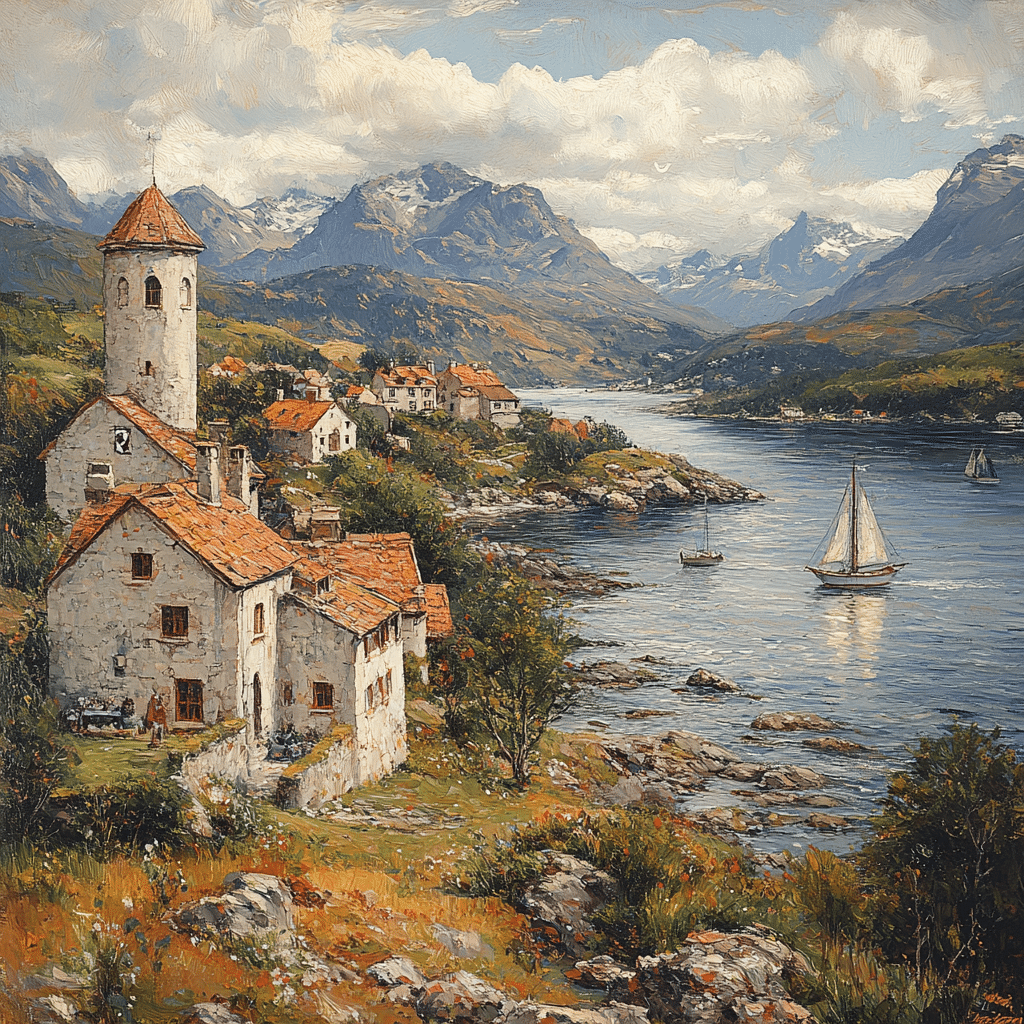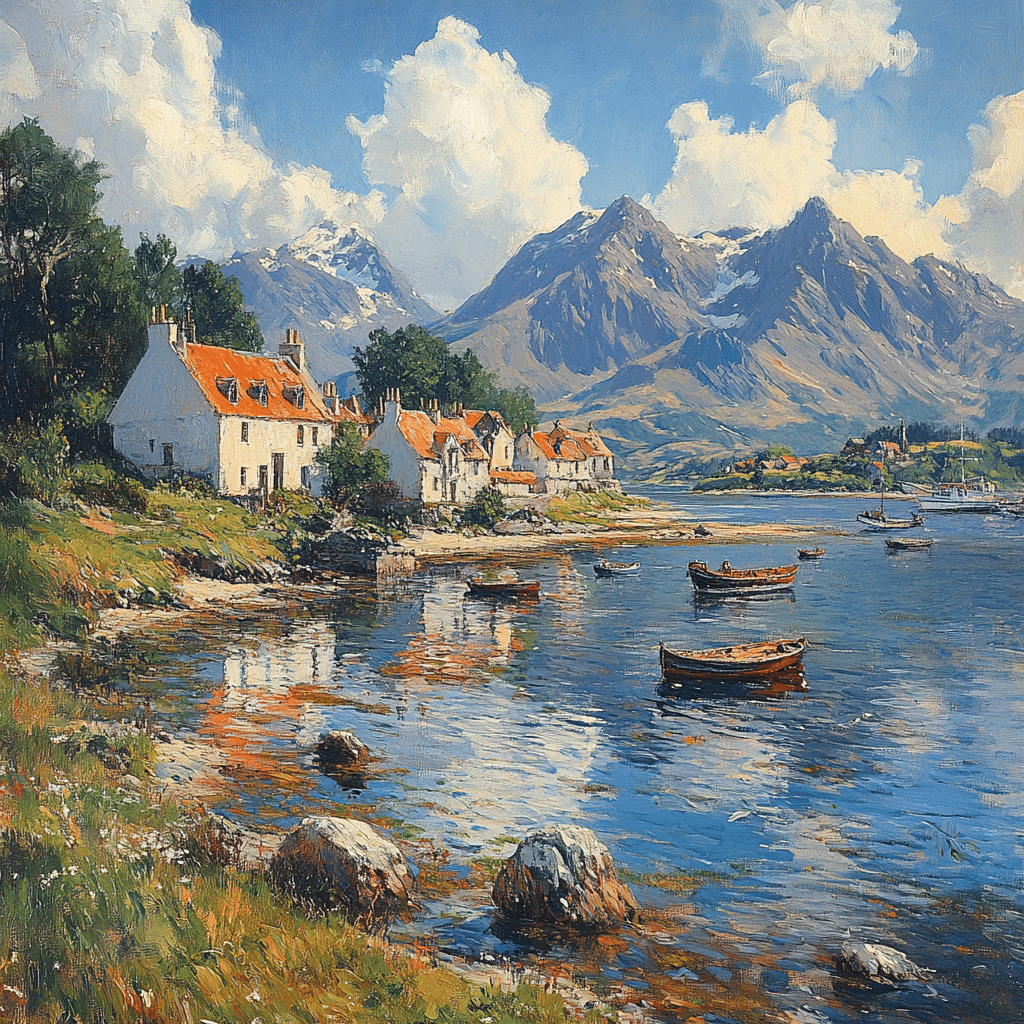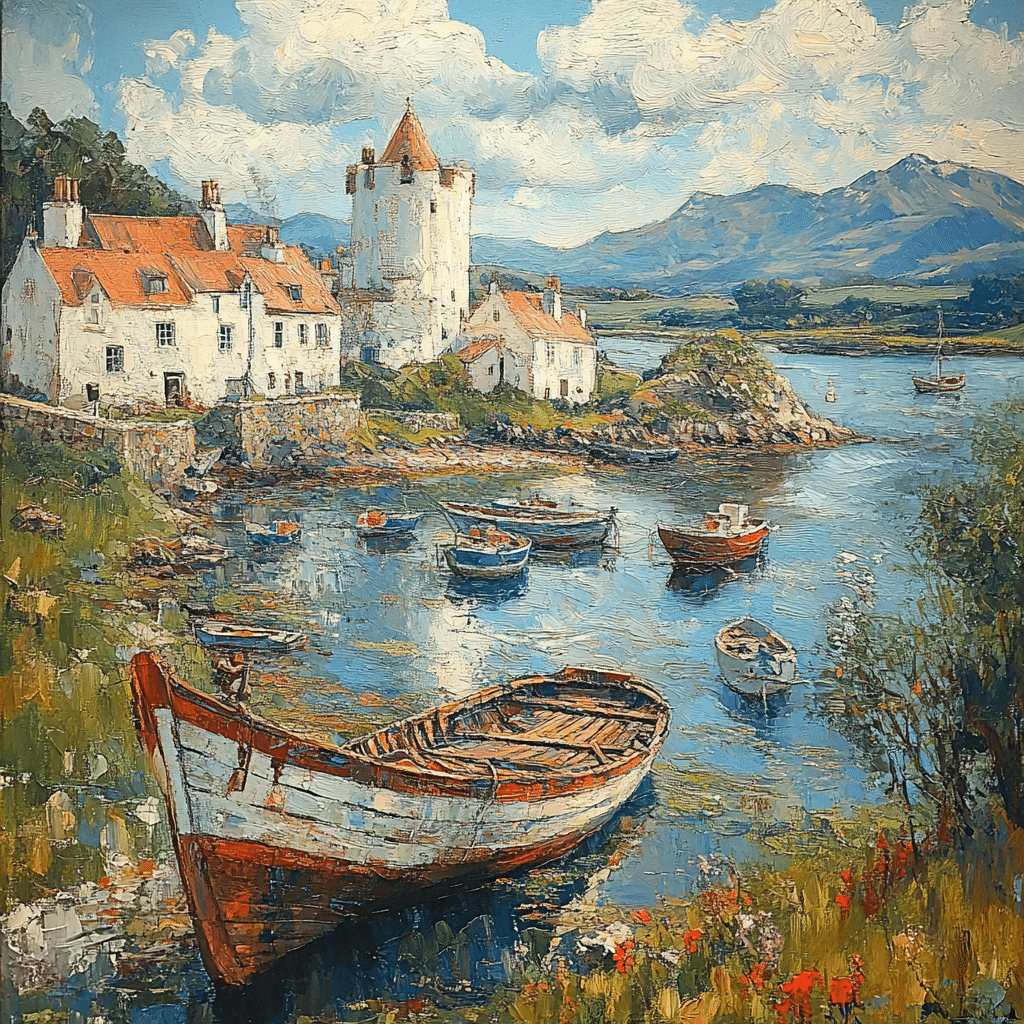Kyle of Lochalsh, a picturesque village located on the mainland of Scotland, has played a pivotal role in the region’s history and continues to be a site of transformation. The village, although physically separated from the Isle of Skye by a short stretch of water, has become intrinsically linked with it, especially since the tolls for the Skye Bridge were abolished. From its early establishment as a ferry point to recent developments in tourism and environmental sustainability, Kyle of Lochalsh encapsulates a rich tapestry of history molded by both tragedy and change.
The Evolution of Kyle of Lochalsh: Key Historical Events
The Formation of the Village
Established in the 18th century, Kyle of Lochalsh originally blossomed as a critical connection for ferry services to Skye. This initial setup allowed the village to grow into a hub for local commerce, facilitating trade and transport between the mainland and the beautifully rugged Isle of Skye. Its strategic location made it indispensable for traders and travelers alike, ultimately shaping the economy and character of the region.
The Jacobite Uprisings
The echoes of the Jacobite uprisings in the 18th century reverberated through the Highlands, affecting Kyle of Lochalsh as well. Prominent figures like Bonnie Prince Charlie stirred local loyalties, influencing the social fabric of the area. These uprisings ignited fervent political and social changes, leading to a reshaping of the community’s identity—one that would be marked by a mix of solidarity and resistance.
The Highland Clearances
The 19th-century Highland Clearances left an indelible mark on Kyle of Lochalsh, as many locals were uprooted from their ancestral lands to make way for sheep farming. This mass displacement not only altered the demographic landscape of the region but also heralded a decline in traditional Gaelic culture. The cultural repercussions instigated a sense of urgency for transformation, as the community grappled with its lost heritage.
The Building of the Skye Bridge
In 1995, the opening of the Skye Bridge fundamentally changed the dynamics of travel to the Isle of Skye. Offering a direct connection, it spurred economic growth within Kyle of Lochalsh. However, it didn’t come without its share of issues, with many residents voicing concerns about environmental impacts and local culture erosion, illustrating how infrastructure projects can reshape community life in unexpected ways.
Recent Environmental Challenges
As we moved into the 21st century, Kyle of Lochalsh confronted mounting challenges linked to climate change and tourism-related pressures. Rising sea levels pose a direct threat to the coastal village, while an influx of visitors complicates the sustainability narrative. Balancing growth with environmental stewardship has become a pressing concern, necessitating innovative approaches to ensure the village’s ongoing vitality.

Transformative Figures and Their Impact in Kyle of Lochalsh
John MacAskill – Land Reform Activist
One of the most influential figures in the fight for land reform during the 20th century was John MacAskill. His vigorous advocacy for the rights of Highlanders helped to ignite regional transformations, laying groundwork for initiatives aimed at preserving and revitalizing Gaelic culture. By addressing historic injustices, MacAskill’s contributions continue to resonate within the community today.
Rosemary Lyon – Local Entrepreneur
As the owner of Eilean Iarmain, Rosemary Lyon exemplifies the spirit of local entrepreneurship that fuels community growth in Kyle of Lochalsh. Her commitment to promoting local crafts and sustainable tourism has garnered attention and support, breathing life into the local economy. Lyon’s endeavors shine a light on how small businesses can catalyze positive change, igniting hope and resilience among residents.
The Community Council’s Role
The Kyle of Lochalsh Community Council has been instrumental in fostering active civic engagement within the village. By spearheading innovative programs that address social welfare and environmental sustainability, they highlight the potential for community-driven transformation. Their efforts reflect a collective commitment to enhancing quality of life while honouring the unique cultural heritage of Kyle of Lochalsh.
The Dual Nature of Tragedy and Transformation in Kyle of Lochalsh
Historical Displacement vs. Modern Resilience
While historical upheavals like the Highland Clearances cast a long shadow over the community, modern resilience emerges prominently. Initiatives aimed at maintaining the Gaelic language and cultural events, such as the Kyleakin Regatta, serve as affirmations of identity and community spirit. This resilience not only celebrates the past but also builds a bridge to the future, ensuring that the lessons learned are not forgotten.
The Impact of Tourism vs. Environmental Preservation
The surge of tourism in Kyle of Lochalsh presents economic opportunities while raising urgent questions about land management and ecological responsibility. Striking a balance between preserving local culture and catering to the burgeoning tourist sector is an ongoing transformation process. Creative solutions that marry sustainable practices with tourism can secure the village’s future without compromising its rich heritage.

Looking Forward: The Future of Kyle of Lochalsh
As Kyle of Lochalsh looks to the future, the challenge lies in embracing change while honouring its storied history. A focus on sustainable tourism, commitment to heritage conservation, and the promotion of local entrepreneurship will all play critical roles. By addressing environmental challenges and economic pressures head-on, the narrative of tragedy can seamlessly weave into one of resilience and hope.
In summary, Kyle of Lochalsh’s evolution from a site marked by historical tragedy to a beacon of transformation encapsulates the broader human experience of overcoming adversity. Ongoing efforts to foster a strong sense of community, coupled with a commitment to preserving cultural identity, will undoubtedly guide Kyle of Lochalsh into a promising future, reminding us that even in the face of challenges, transformation is always within reach.
The story of Kyle of Lochalsh goes beyond mere facts. Its residents continuously embody strength and determination, blending a rich history with hope for tomorrow.
Kyle of Lochalsh: Fun Trivia and Interesting Facts
A Brief Dive into Kyle of Lochalsh’s Rich History
Did you know that Kyle of Lochalsh is a gateway to the picturesque Isle of Skye? Known for its rugged beauty and rich culture, this tiny village in Scotland has seen its fair share of changes over the years. The village, which has been a vital transport hub since the 18th century, played a significant role in connecting communities across the waters. Interestingly, Kyle of Lochalsh is also home to a population that shares a love for wildlife; you might even spot a balding monkey! These creatures aren’t native to Scotland, of course, but they have sparked conversations among locals amazed at their presence across saltwater habitats.
Natural Wonders and Architectural Marvels
As you explore Kyle of Lochalsh, take a moment to appreciate the blend of natural wonders and man-made structures. The iconic Skye Bridge offers stunning views and is a symbol of the connectivity that defines the town. Speaking of bridges, the area has seen transformations shaped by various economic covenants that promote sustainable development. If you’re curious about what these covenants entail, you can define Covenants to further understand their purpose in enhancing community living. And while you traverse these stunning landscapes, don’t forget to glance back at the hustle of real estate, given the region’s current interest rates on Homes, which are frequently analyzed by property Managers.
Cultural Highlights and Noteworthy Individuals
Kyle of Lochalsh is more than just a scenic destination. It’s steeped in history and culture that can attract folks from all walks of life. The town often celebrates its diverse identity. In fact, did you know that Kolinda Grabar kitarović, the first woman president of Croatia, visited the UK? Her trip highlighted the importance of cultural exchanges, something that Kyle of Lochalsh embodies with its warm community vibe. And speaking of strong personalities, anyone else wondering what Jennifer Lawrence looks like now compared to her younger days? The evolution of stars can spark interest in many, akin to the delightful evolution of Kyle of Lochalsh’s community.
Embrace these riveting facts and immerse yourself in the tales that Kyle of Lochalsh has to tell, from its stunning landscapes to its cultural significance; it’s a spot that keeps you coming back for more. So, the next time you find yourself in the area, take a moment to appreciate the rich tapestry that this small village weaves into the larger Scottish narrative.

Why is Kyle of Lochalsh famous?
Kyle of Lochalsh is famous for its historical significance, particularly as the point of departure for the HMY Iolaire, which sank on New Year’s Eve in 1918, tragically claiming the lives of soldiers returning from World War I.
Is Kyle of Lochalsh an island?
Kyle of Lochalsh is not an island; it’s a village located on the mainland of Scotland, although it’s close to the Isle of Skye and the two areas are becoming more connected over time.
How far is kyle from Skye?
The distance between Kyle of Lochalsh and the Isle of Skye is about 36 miles, with the road journey being slightly shorter at around 34.7 miles.
What is the population of Kyle of Lochalsh?
The population of Kyle of Lochalsh is around 1,200 people, making it a small yet vibrant community.
Does anyone live on the Isle of Skye?
Yes, there are folks who live on the Isle of Skye, which is home to several villages and a diverse population, known for its stunning landscapes and rich culture.
Why is Isle of Skye so special?
Isle of Skye is special for its breathtaking scenery, including rugged mountains, picturesque lochs, and rich history, making it a popular destination for tourists and nature lovers alike.
What is a Kyle in Scotland?
In Scotland, a “Kyle” refers to a narrow body of water or a strait, often between the mainland and islands, highlighting the geographical features in the region.
Is there a ferry from Kyle of Lochalsh to Skye?
There isn’t a direct ferry service from Kyle of Lochalsh to Skye, but the bridge that connects them makes it easy to travel back and forth by road.
What clan lives on the Isle of Skye?
The clan traditionally associated with the Isle of Skye is the MacLeods, renowned for their long history and connections to the island.
Is Kyle a nice place to live?
Kyle of Lochalsh is generally considered a nice place to live, offering a friendly community vibe, local amenities, and access to stunning natural landscapes.
Can you get a bus from Kyle of Lochalsh to Skye?
Yes, you can catch a bus from Kyle of Lochalsh to Skye, which provides a convenient option for those without a car to explore the island.
How long does it take to drive around the Isle of Skye?
Driving around the Isle of Skye can take anywhere from a few hours to a whole day, depending on how many stops you make to enjoy the sights along the way.
Why is it called the Kyle of Lochalsh?
It’s called Kyle of Lochalsh because it sits at the mouth of the Loch Alsh, which flows into the sea, and “Kyle” refers to the strait in Scottish terminology.
How old is Kyle Lochalsh?
Kyle of Lochalsh has been around for quite some time, with its roots going back to the late 19th century, making it over a hundred years old.
How many people live on Skye?
The population of the Isle of Skye is around 10,000 people, contributing to a unique blend of culture and heritage in this beautiful area.



